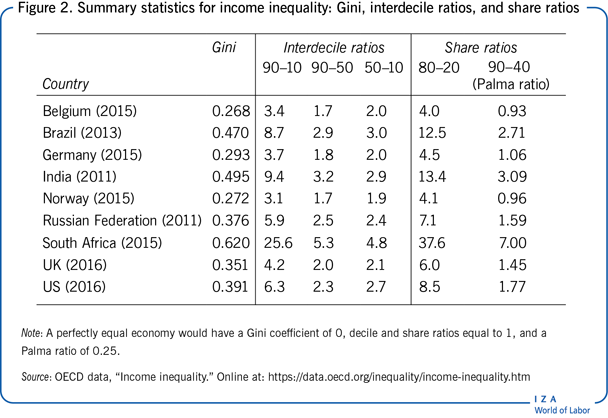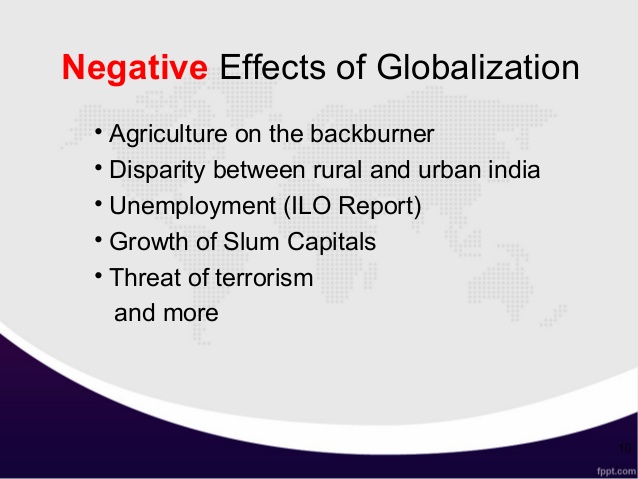Содержание

Answer No, the line cannot be used for prediction no matter what the sample size is. If \(r\) is significant and the scatter plot shows a linear trend, the line can be used to predict the value of \(y\) for values of \(x\) that are within the domain of observed \(x\) values. What if, instead of a balanced portfolio, your portfolio were 100% equities? Using the same return assumptions, your all-equity portfolio would have a return of 12% in the first year and -5% in the second year. These figures are clearly more volatile than the balanced portfolio’s returns of 6.4% and 0.2%. Deng, S.; Chen, T.; Yang, N.; Qu, L.; Li, M.; Chen, D. Spatial and temporal distribution of rainfall and drought characteristics across the Pearl River basin.
The size of ‘r’ is altered, when an investigator selects an extreme group of subjects in order to compare these groups with respect to certain behavior. “r” obtained from the combined data of extreme groups would be larger than the “r” obtained from a random sample of the same group. There is a high correlation between aptitude in a subject at school and the achievement in the subject. At the end of the school examinations will this reflect causal relationship?
Correlation Between Crypto Market and Nasdaq Turns Positive Ahead of US CPI Release – Yahoo Finance
Correlation Between Crypto Market and Nasdaq Turns Positive Ahead of US CPI Release.
Posted: Mon, 13 Feb 2023 08:00:00 GMT [source]
Here, we classify each pair of variates simultaneously in the two classes, one representing score in Physics and the other in Mathematics as shown in Table 5.6. Determine for every pair of scores the two deviations x and y. Check them by finding algebraic sums, which should be zero. Here, using the formula for computation of r depends on “where from the deviations are taken”. In different situations deviations can be taken either from actual mean or from zero or from A.M.
What Is a Correlation Coefficient?
important of correlation indexes had diverse resonance phenomena with low-frequency climatic factors at different scales and the differences were obvious before and after mutation. Different types of correlation coefficients are used to assess correlation based on the properties of the compared data. By far the most common is the Pearson coefficient, or Pearson’s r, which measures the strength and direction of a linear relationship between two variables. The Pearson coefficient cannot assess nonlinear associations between variables and cannot differentiate between dependent and independent variables.

All we can do with the information is study the connections between phenomena to see how each one influences the other. Knowing that one change can create additional alternations can be beneficial when looking for unique outcomes, but it fails to answer the question of “why” that is sometimes necessary for research. Some correlational research study methods can benefit from the use of surveys to collect information on a specific topic. Since the variables being studied still aren’t under the control of the researchers, then it can reveal the presence of a relationship between them. That makes it fast, easy, and affordable to start looking for potential outcomes and results when studying specific contact points. When you choose a correlational research study to review variables, then neither one goes through a manipulative process.
Causation
It’s a rank correlation coefficient because it uses the rankings of data from each variable (e.g., from lowest to highest) rather than the raw data itself. The table below is a selection of commonly used correlation coefficients, and we’ll cover the two most widely used coefficients in detail in this article. Suppose there is a strong correlation between two variables or metrics, and one of them is being observed acting in a particular way.

https://1investing.in/ is a method by which to calculate the relationship between two variables. The coefficient of a correlation is a numerical measure of the relationship between paired observations. For different coefficients of correlations, the relationship between variables and their interpretation varies. Correlational Research | When & How to Use A correlational research design measures the strength and direction of a relationship between variables. There are many different correlation coefficients that you can calculate.
When people know that they are under observation, then there is a significant risk that their behaviors will change. If the participants remain anonymous with the work conducted in a public setting, then it is an ethical approach. The advantages and disadvantages of a correlational research study help us to look for variables that seem to interact with each other. If you see one of those variables changing, then you have an idea of how the other is going to change.
Benefits of Correlation Analysis
Visually inspect your plot for a pattern and decide whether there is a linear or non-linear pattern between variables. A linear pattern means you can fit a straight line of best fit between the data points, while a non-linear or curvilinear pattern can take all sorts of different shapes, such as a U-shape or a line with a curve. In other words, it reflects how similar the measurements of two or more variables are across a dataset. Financial planners assess the correlation of an individual stock to an index such as the S&P 500 to determine if adding the stock to an investment portfolio might increase the portfolio’s systematic risk.
In the world of analytics correlations are specific values that are calculated in order quantify the relationships between variables. Correlation is a measurement of how closely two variables are relatable by a linear relationship. If the relationship between two variables can be displayed linearly, then it can be thought of as a measure of noise in the relationship.
As an interdisciplinary researcher, she enjoys writing articles explaining tricky research concepts for students and academics. To find the slope of the line, you’ll need to perform a regression analysis. Correlation coefficients always range between -1 and 1. Correlation analysis exampleYou check whether the data meet all of the assumptions for the Pearson’s r correlation test. Correlation coefficients are unit-free, which makes it possible to directly compare coefficients between studies. In cases when both are applicable, statisticians recommend using the parametric methods such as Pearson’s Coefficient because they tend to be more precise.
- PDO, SS, and AO were the important climate factors driving the abrupt change of PCD, and the resonance between climate factors and the PCD was characterized by complexity and diversity.
- Thus, we observe that the value of the coefficient of correlation r remains unchanged when a constant is multiplied with one or both sets of variate values.
- AO showed anti-phase changes with PCD and PCP, while ENSO and PDO had different effects on precipitation indexes at different periods.
- This is the proportion of common variance not shared between the variables, the unexplained variance between the variables.
Running the correlation analysis twice is a great way to assess the strength of the influence of the anomalies on the analysis. Spearman’s Rank coefficient may be used if anomalies are present instead of Pearson’s Coefficient, as this formula is extremely robust against anomalies due to the ranking system used. We can see that graph A with a correlation of 0.86 indicates a much stronger relationship between horsepower and weight than Graph B’s correlation of 0.43 measuring the relationship between acceleration and mpg. Whereas graph C also indicates a strong linear relationship, here it generates a negative value of -0.7, meaning that as horsepower increases so acceleration time decreases. If the relationships between these factors were much weaker, then we would expect to see correlations with much smaller magnitudes such as 0.2 or 0.1. Correlation is a term that we employ in everyday speech to denote things that appear to have a mutual relationship.
Your Article Library
Cheng, Z.; Chen, X.; Zhang, Y.; Jin, L. Spatio-temporal evolution characteristics of precipitation in the north and south of Qin-ba Mountain area in recent 43 years. Dong, Q.; Wang, W.; Kunkel, K.E.; Shao, Q.; Xing, W.; Wei, J. Heterogeneous response of global precipitation concentration to global warming. Sun, Q.; Miao, C.; Qiao, Y.; Duan, Q. The nonstationary impact of local temperature changes and ENSO on extreme precipitation at the global scale. Hao, W.; Shao, Q.; Hao, Z.; Ju, Q.; Baima, W.; Zhang, D. Non-stationary modelling of extreme precipitation by climate indices during rainy season in Hanjiang River Basin, China. Sarricolea, P.; Meseguer-Ruiz, Ó.; Serrano-Notivoli, R.; Soto, M.V.; Martin-Vide, J. Trends of daily precipitation concentration in Central-Southern Chile. In the spectral analysis of XWT of PCP and SS in Figure 5g, it can be observed that the PCP has a significant anti-phase oscillation with SS from 1974 to 2001 with a period of 7.5–14 a.
However, even though correlation doesn’t imply causation, very often the fact that we measure the strength of a relationship and prove its existence in the first place can greatly enhance our decision making. Graph A shows a strong positive relationship between the horsepower of various cars and the respective weight of the vehicles. Graph B also shows a positive relationship between the time taken to accelerate to 60mph and the car’s fuel consumption in miles per gallon. Finally graph C shows a strong negative relationship between horsepower and time taken to accelerate to 60mph . Correlation is a statistical technique which shows the degree and direction of relationship between the two variables.
In short, the tendency of simultaneous variation between two variables is called correlation or covariation. If two variables X and Y are independent, coefficient of correlation between them will be zero. While it is true that correlation does not necessarily imply causation, causation does imply correlation. Once correlation is known it can be used to make predictions. When we know a score on one measure we can make a more accurate prediction of another measure that is highly related to it.
Last, scatterplots can easily depict correlation when they incorporate density shading. A density shade or density ellipse is a shaded area on a scatterplot that visually shows the densest region of data points on a scatterplot. The density ellipses will often mirror the direction of a linear correlation line if variables are related. Otherwise, density ellipses that are more circular with no defined direction indicate lower correlation.
In conclusion, correlation and regression analysis are related in the sense that they deal with relationships among variables. By indicating how and the extent of variable association, they assist in decision making across numerous fields, from marketing to science and psychology. Besides the above significance, correlation analysis has aided the progressive development of philosophy and science owing to the increased knowledge of variable relationships. The benefit of a correlational research study is that it can uncover relationships that may have not been previously known. What it does not provide is a conclusive reason for why that connection exists in the first place.
Radiologic Findings after COVID-19 and the Correlation with Lung … – RSNA Publications Online
Radiologic Findings after COVID-19 and the Correlation with Lung ….
Posted: Tue, 14 Feb 2023 08:00:00 GMT [source]
The XWT and the WTC analysis between the PCP and four climate factors are shown in Figure 5. Between PCP and PDO, it can be observed in Figure 5a that three resonance domains are exhibited in the spectral analysis of XWT. There are four small resonance domains with PDO ahead dispersed in the map of spectral analysis of WTC in Figure 5b. One of the more significant is in 1963–1968 (with a period of 0–1.5 a), and the others appear in 1981–1988 , in 2008–2009 and 2009–2011 (with a period of 5.5 a). The closer the PCD value is to 1, the more concentrated the annual precipitation.
Formula Review
A value of ± 1 indicates a perfect degree of association between the two variables. Correlation analysis is a statistical method used to measure the strength of the linear relationship between two variables and compute their association. Correlation analysis calculates the level of change in one variable due to the change in the other. A high correlation points to a strong relationship between the two variables, while a low correlation means that the variables are weakly related. It examines the influence of one or more independent variables on a dependent variable.
∑D2 represents the sum of the squares of differences in rank. PreserveArticles.com is a free service that lets you to preserve your original articles for eternity.
